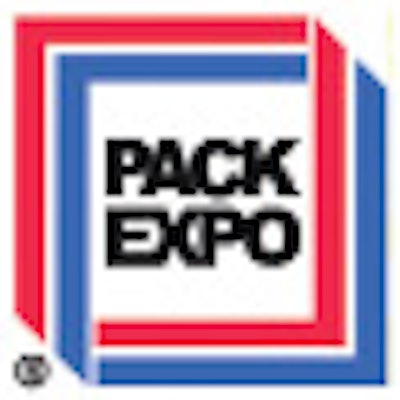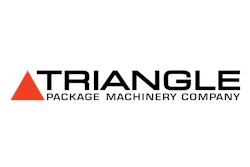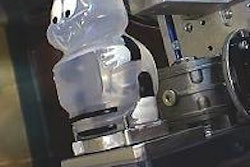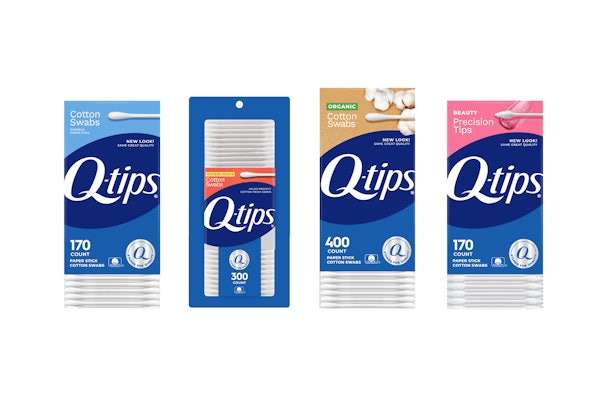
Editor’s note: When Pack Expo International opens October 29 in Chicago, it will be the 50th anniversary of this important show. To mark Pack Expo’s continued value and admirable longevity, we’re running a series of First Person spotlights on key packaging technologies. This installment comes courtesy of Zip-Pak (www.zippak.com) and Triangle Package Machinery (www.trianglepackage.com).
PW: What is the demand for resealable packaging like today? What drives consumer demand for resealable packaging?
Hogan: In a word, convenience. Studies repeatedly show that when comparing multi-portion products, consumers prefer the convenience of a flexible packaging having a resealable feature. Zippers provide easy-open convenience for consumers of all ages, allowing even very young children and elderly individuals to easily open and close packages. This demand for added convenience is likely to become even more pronounced in the years ahead as many societies around the world cater to aging populations.
Muskat: Consumers also respond positively to the way resealable packaging protects products. Complete bag closure ensures food stays fresher, longer. This not only enhances product flavor, but also prevents waste.
PW: In what geographies and for what applications is demand for resealable packaging growing?
Hogan: Globally, there is growing demand for resealable flexible packaging featuring zipper technology. In North America, the trend started with meat and cheese products twenty years ago and is now widely visible in pet treat, confection, frozen food and produce applications. In Latin America, powdered products, sliced meats, and produce are widely preferred in zippered packaging, especially in developed markets like Mexico. In Europe, cheese was the first market to provide resealable flexible packaging, quickly followed by growing demand in pet food, nut and dried fruit applications. In Asia, the focus is on pre-made pouches for powdered drinks, seaweed, nuts, and shrimp-flavored snack crisps. The market for resealable packaging in Australia and New Zealand is also rapidly expanding, with popularity in the dairy, frozen food, and pet food markets.
Some applications have incorporated resealable features faster than others, but the continuing trend is that brands in a variety of markets are looking to value-added resealable solutions to offer greater consumer convenience. Though the food sector, retail and institutional, remains the largest market for resealable packaging, the retail non-food market represents the next largest, fast-growing customer base. This market covers a broad range of products such as household goods, pet food, garden supplies, nutraceuticals, and cosmetics. There has also been significant growth in the use of zipper technology for personal care applications such as wet wipes.
PW: In what applications did resealable packaging make its first impact and how has the demand for new applications evolved over the years?
Muskat: Twenty years ago, Sargento introduced resealable packaging for a shredded cheese product. This was the first nation-wide commercial food application in the United States. The popularity of this pioneering package with consumers led other food brands to follow suit—first in the United States and then in many countries around the world. Today, while there are many applications for press-to-close zippers, there is also growing demand for slider zippers. Slider zippers offer an even greater level of packaging opening and resealing convenience for consumers of all ages. Slider zippers also provide added functionality, creating pour spouts that can be adjusted to dispense the desired amount of product and reduce product spillage.
Hogan: Demand for new applications has also evolved as the types of products that are compatible with resealable packaging have expanded. For example, retortable zippers are now available for resealable packaging of food, pharmaceutical, and medical products that are exposed to high process temperatures. A retortable zipper will not degrade or melt under the extreme heat during pouch forming. It retains its shape and ability to reseal long after the retort packaging process. Similarly, for powdery or granulated contents, a specialty zipper with patented ‘evacuation ports’ is available for preventing the product from clogging up tracks during resealing. This permits a cleaner seal over regular press-to-close versions for powdery products.
Consumers consistently prefer for resealable packs. It is quite common to see new applications in areas where innovations in packaging technology have made it possible to incorporate zipper technology.
PW: What types of flexible packaging can be made resealable?
Muskat: Flexible fasteners fit on nearly any style of flexible bag or pouch. Zipper-compatible bag formats include block-bottom (or gusseted), pillow, stand-up pouch, 3- or 4-side sealed, and thermoformed. As for bag size, zippers are available for small to large industrial-format bags. Zippers can be quickly incorporated with the installation of new machinery, a retrofit of existing machinery, or with the use of pre-zippered films.
Hogan: Zipper technologies are also available to meet the specific production and performance requirements of all types of resealable packaging machines. There are at least 200 zipper profiles on the market to support machine configurations such as vertical/form/fill/seal, horizontal/form/fill/seal, thermoform/
fill/seal, and pre-made pouch formats. Pack Expo International 2006, which unites material and machinery innovations in a single location, will be an ideal way for brand owners to learn more about resealable packaging technology. Both zipper suppliers and OEMs will be on hand to help guide them to the right zipper for any equipment, bag style, and product.
PW: What major improvements in zipper applicator machinery have been developed in the past several years? What direction do you expect future machinery developments to take?
Muskat: Zipper applicator technology can now be integrated directly into packaging machinery without compromising production speeds or expanding machinery footprints. I expect line speeds will continue to increase with enhancements in machinery, film, and zipper technology as well as improvements in the interface between these three elements. For example, as it becomes possible to seal zippers to film at even lower temperatures, line speeds will improve.
Hogan: In coming years, zippers will provide even greater value-added features. For example, in the future, resealable packages may be providing an even greater level of tamper evidence. Also, I think we will see more and more combined technologies. For instance, could a microchip now found in a “singing” greeting card be made part of a slider zipper that will recite a recipe when the package is opened? Will it be possible to incorporate oxygen scavenger, heat sensor, or RFID technology into zipper platforms? The trend will be toward combining technology and, as always, consumers will dictate demand based on a preference for convenience. —Pat Reynolds

























